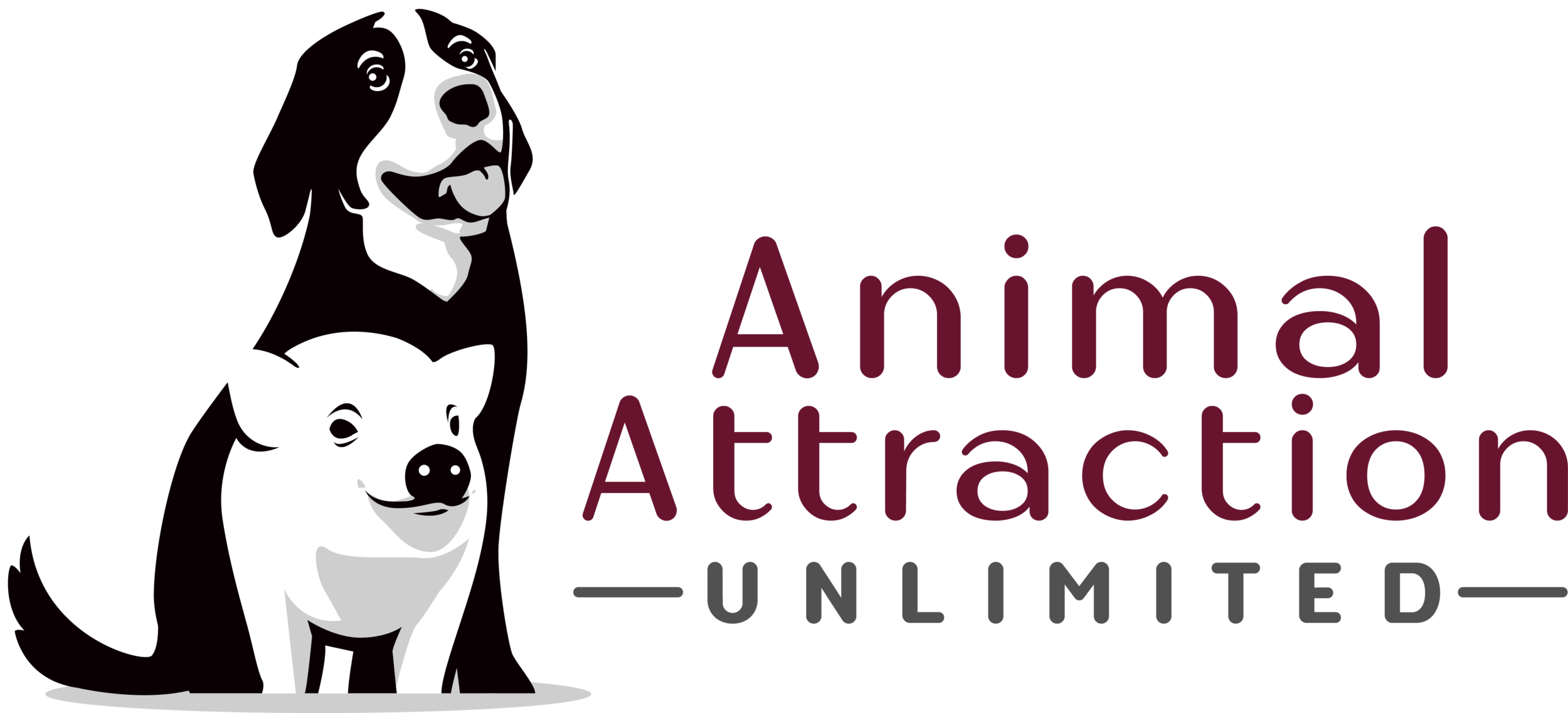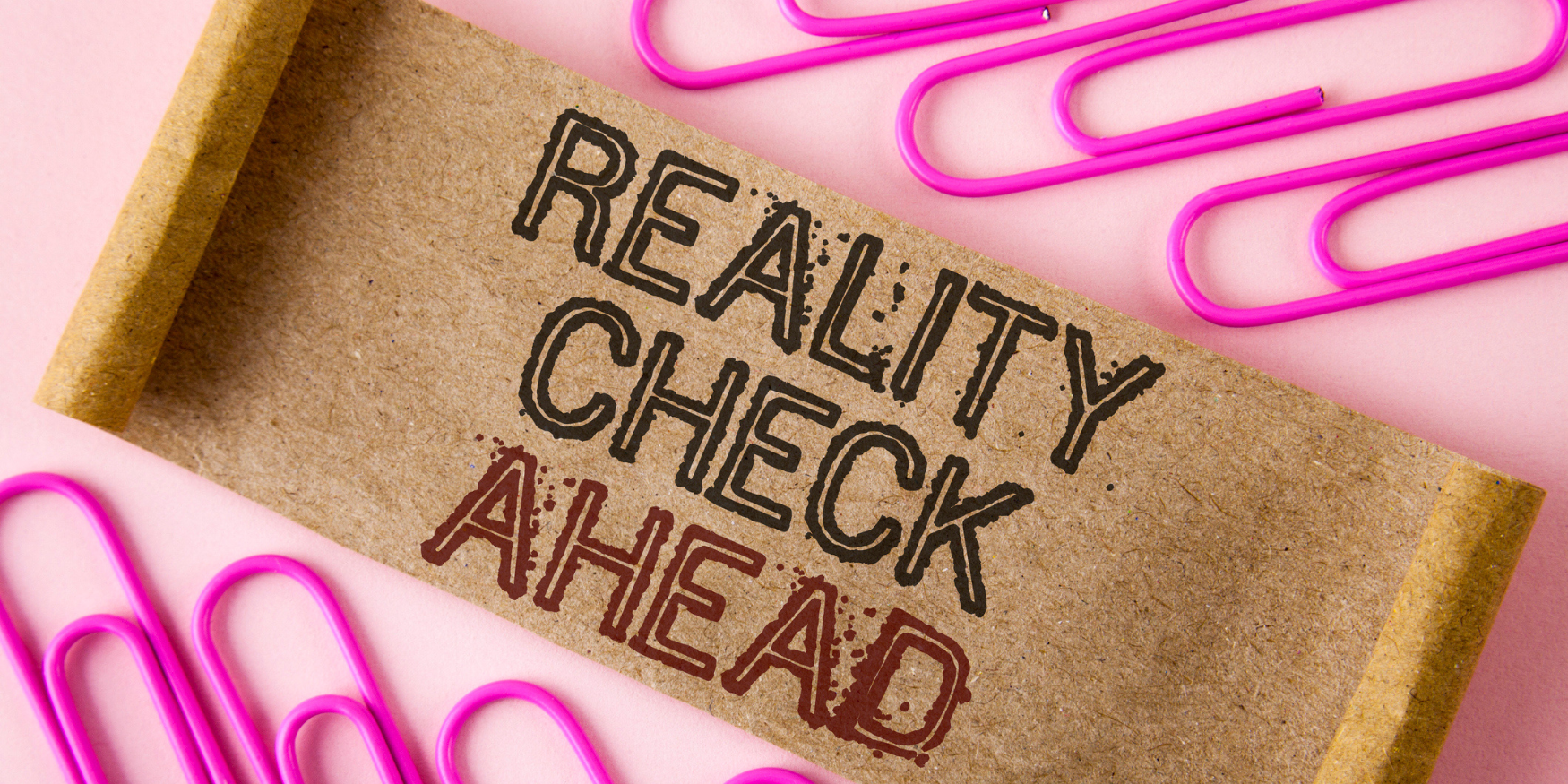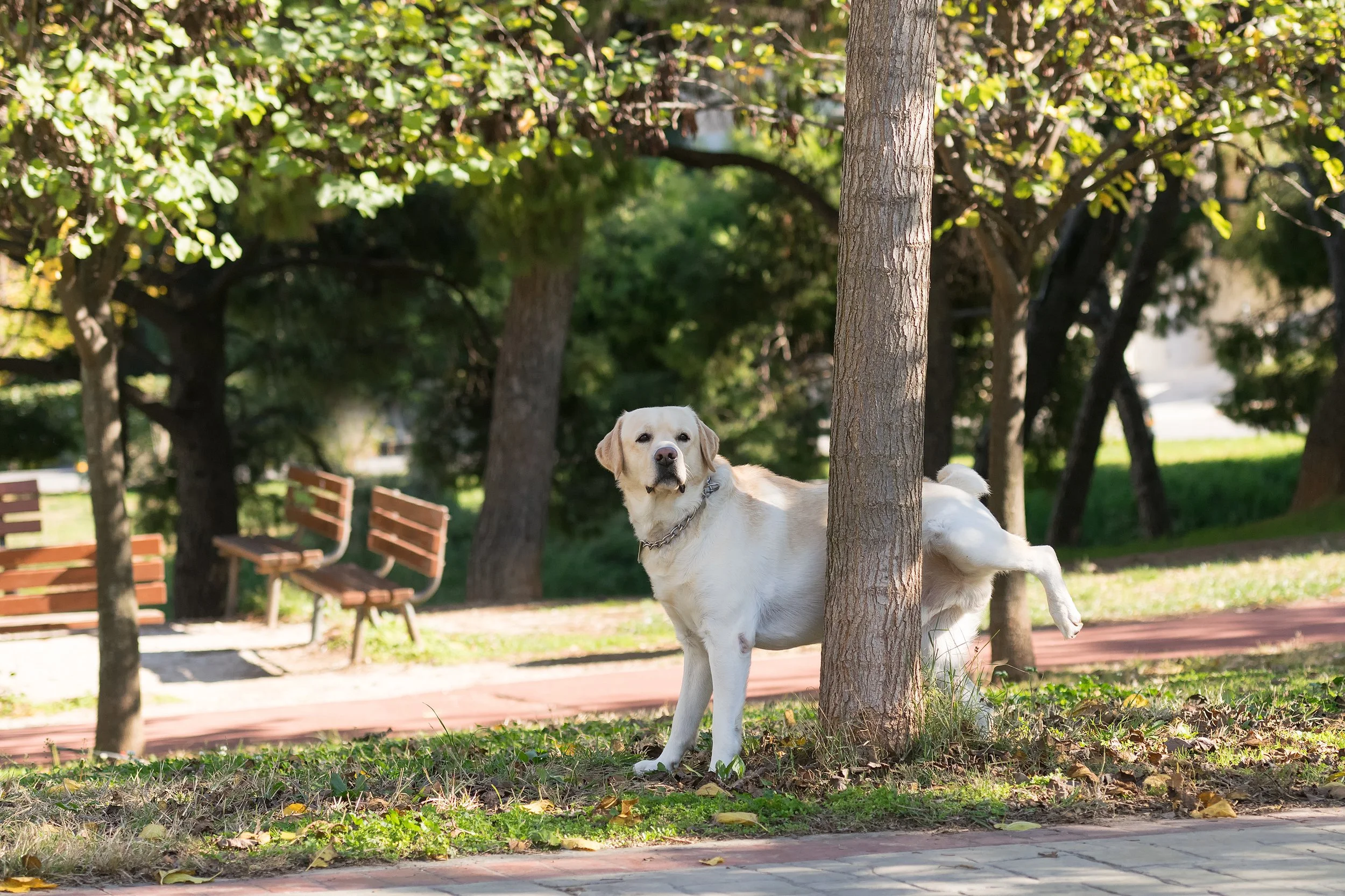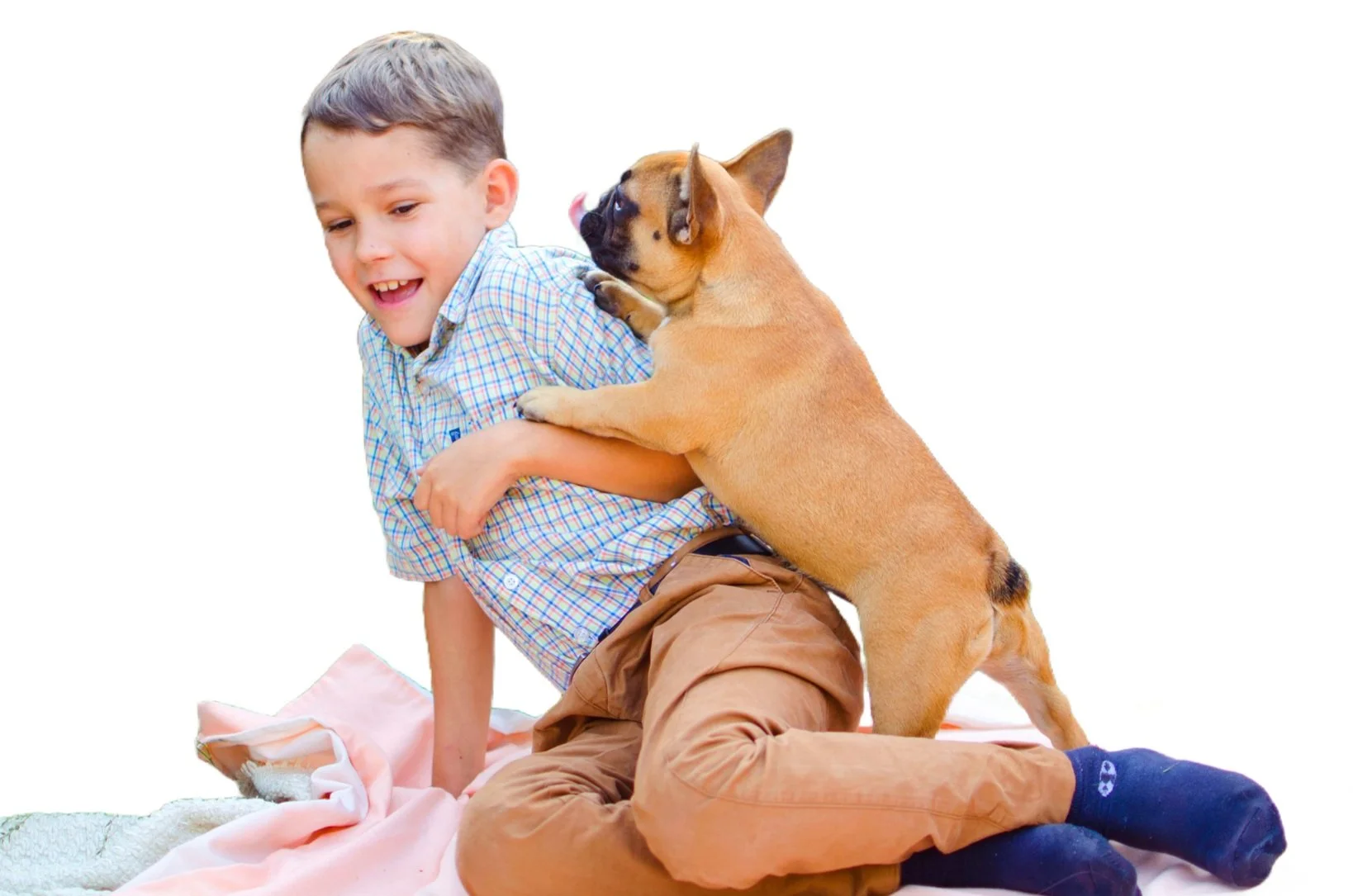When you're out walking your dog, and he's running along, and then he just veers in your direction, but he doesn't come all the way in, that's another way of just checking in. Sometimes they'll do that just so that they can catch you in their peripheral, so that you get onto their radar, and if you just acknowledge that with a “good dog”, just for turning in towards you, they don't have to come all the way in. But again, for me, when I'm working off leash, if they come in, then they get a reward. Otherwise they just get the good dog. They still get the acknowledgement. They just get the real high value stuff if they come all the way in.
Read MoreThere's a lot of fun that you can have with trick training. If you take your dog somewhere and he's little uncomfortable, and you can start putting him through his little repertoire of tricks it does two things. It makes others receptive to your dog, which is a good thing, and it also gives your dog something to do that he's confident doing, because basically, there is no wrong response to a trick. You know, when you start trick training, you're teaching a dog to do something, and it's not like you're trying to take a problem behavior away. So it's a very confidence building thing to do.
Read MoreI think that it's important for people to then ask themselves, for whose benefit is this, especially when it has to do with going to the dog park, or going in the car to run errands, or playing with a particular toy.
Read MoreAnd sometimes, if that means when I go to visit my sister, who's out of state, we don't see them that often, I always take a crate with me. So I might have three dogs and only one crate, but I have a crate so that if I have a dog that's going a little over the top and I don't want to deal with him, I don't want to have to put myself in a position where I'm stressed out because I'm trying to be entertaining with my family and deal with the dog. I can use the crate most of the time.
Read MoreHe knows how to affect the outcome. He says, I know how to do this. I can do this one and and I know how this is going to come out, right? And I can make the decision about how I'm going to make this come out, so I can do this and know, Oh, guess what? Aren't I great, and you're going to be totally responsive to me. And I know that it's, it's completely clear in my head, right? I know exactly what's going to happen here, yeah. And so that's empowering, and that's actually even though the other is a very loving gesture for the dog that is a more loving gesture for the dog, that's an easier thing for them to understand. So if you have a dog that tunes you out, and then you because you talk, talk, talk, talk, or other, there are other ways that you can get it right, tune you out, and then you suddenly throw something at them, and they don't do it because they've learned to tune you out.
Read More“ But you want to try to give your puppy, your young dog, and certainly if you're raising a litter of puppies, you want to try to give them a variety of experiences. One of the hardest things when people first whelp a litter, let's say, well, one of the worst things is that people do it and they don't give any don't give any thought to it ahead of time. But if you're going to do that, and you've taken all the necessary precautions, and you've done all the things that you need to do medically, and you've really thought it through, then you're also going to think through the process of giving that dog, those babies, a lot of experiences when they're young. That means not just keeping them in one room. You can't just keep them in one room the whole time, because they've got to get out, and they've got to have different experience and put their feet on different surfaces, absolutely different smells.”
Read MoreAnd that's not just about bringing out play in your dog, by the way, that's one of the most hilarious about training. It is everything about training. It is very difficult for dogs to take our word for it that something is important. It is not innately important to them. Maybe we're teaching them to do something that we think is a really big deal and left to their own devices it fits none of their natural behaviors and none of their sensibilities. Tell them that this is important.
Read MoreWhen I go into a household where somebody says, “well, the dog is really bothering my cat”, there's a few things that I look for. One of the things is, what's the attitude of the cat I want to see. What does the cat tell me? Does the cat tell me that they believe they'll get hurt? Because that belief, I weigh in. That weighs in, very important, very large for me, yeah, in terms of how I assess the situation, because the cat is reading the dog really well.
Read More"Well, he's a male dog, what do you expect him to do?" is a cop-out. Yes, marking is a natural male dog behavior. But so is urinating wherever they please, and we wouldn't tolerate that indoors. Dogs know the difference between a tree and a person, or a lamppost and a living room couch. What they don't know, unless you teach them, is that there should be a social or behavioral distinction in terms of marking.
Read MoreDon't base your choice on one dog that you met as a certain breed, especially the more uncommon breeds or the more rare breeds. Here's an example. I had a client who their neighbor had a Catahoula that was not a typical Catahoula. They went out and got a Catahoula based on this one dog, and their dog turned out to be a typical Catahoula. It was not a pretty situation, especially since they had kids.
Read MoreIf you don't have a picture in your mind of the behavior you want and what you want that behavior to look like, there's absolutely no way the dog is going to know. Clearly defining what it is that you're looking for is is one of the most important parts of consistency.
Read MoreToday we are going to talk about the myths and sort of rigid ideas and dogma that is somehow been adopted into dog training, and we are not sure why, and we don't know where they came from. And some of them, we do, and some of them may have made sense before, but they don't now. Or they may still make sense, but it doesn't mean that they're mandatory or that they're applicable to every situation.
Read MoreInterrupting play might feel counterintuitive, but it's a vital skill for any dog owner. Kim highlighted the need to stop play when a dog starts targeting another dog instead of the toy. Laura echoed this, mentioning her positive reinforcement strategy of rewarding dogs for staying close and not engaging in unwanted chasing. Kim further elaborated on teaching a "stay" command during ball play, ensuring all dogs get a turn without triggering unwanted chases.
Read MoreEver watched your dog gleefully wrestling with a furry friend and wondered, "Is this fun, or is it about to turn into a rumble?" You're not alone! In a fascinating episode of the "Doggie Dish" podcast, expert dog trainers Laura Bourhenne from Animal Attraction Unlimited and Kim Reinhart from Your Canine Educator dive deep into the nuanced world of dog play, particularly the often-misunderstood realm of roughhousing.
Read MoreEver find yourself correcting your dog after they've already done something you don't want? This podcast explains why this common scenario – like a dog jumping on a guest and then being told to sit – can actually set your dog up for failure. Discover why waiting for the "bad" behavior before intervening can create a cycle that undermines your training goals.
Read More"Think you need hours of dedicated training? Think again. We're 'lazy trainers' who get results by integrating training into daily activities. Discover how to teach essential commands without disrupting your busy schedule."
Read MoreToday’s show is about noticing when a small behavior can become a problem in the future. At first, we might see a small version of a behavior and ignore it because hey, it's not a big deal, right? But as trainers, we can see the future and it's not because we're psychic. It's due to the fact that we've worked with so many dogs and have seen how behaviors develop from something small into something bigger and can sometimes difficult to change.
Read MoreToday’s show is about the ins & outs of living in a multi-dog household. Laura & Kim have suggestions which will make your life easier as well as reasons why not to do certain things.
Read MoreWhen discussing shy, fearful or reactive dogs, it is important to know what we mean by that. What does a shy, fearful or reactive dog look like, and what can you do about it?
A shy or worried dog will be uncomfortable with a person moving into their space. They will likely do what is called avoidance behaviors. Avoidance behaviors are things a dog will do to indicate to the person or dog, that they are uncomfortable with the situation and want avoid interaction or confrontation. Things like turning their head, lick their lips, evert their eyes. Think of things you would do if you wanted to ignore a person (minus the lip licking).
Read More

























